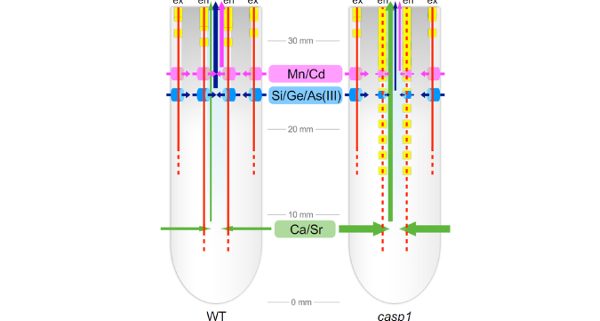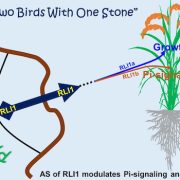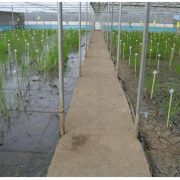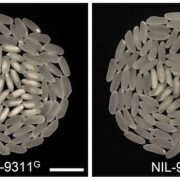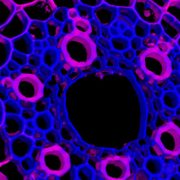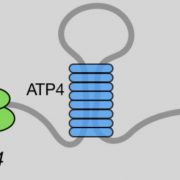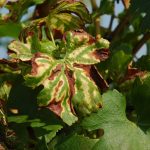Casparian Strip Formation in Rice
Wang et al. identify a protein that mediates Casparian strip formation at the endodermis in rice roots. Plant Cell https://doi.org/10.1105/tpc.19.000296
By Jian Feng Maa and Jixing Xiab
aInstitute of Plant Science and Resource, Okayama University, Japan
bCollege of Life Science and Technology, Guangxi University, China
Background: Plants absorb minerals from the soil to support growth and development. Nutrient concentrations in the soil fluctuate widely, especially in rice paddies. Rice grows under both upland and flooded conditions, which have different concentrations and forms of minerals. Plants have developed several strategies that control nutrient uptake for optimal growth. One such strategy is the formation of a physical barrier called the Casparian strip (CS) at the endodermis (and sometimes also the exodermis) in the root. The CS seals the space between cells, limiting mineral flow from the soil to root stele. The molecular mechanisms underlying CS formation in rice, which has a CS at both the endodermis and exodermis, are unknown.
Questions: Which genes are involved in CS formation in rice roots? What is the role of the CS in selective mineral uptake in rice and how does this differ from that in Arabidopsis, which has a CS only at the endodermis?
 Findings: OsCASP1 (Casparian strip domain protein 1) is involved in CS formation at the endodermis, but not at the exodermis. OsCASP1 seems to form a protein scaffold at the endodermal cells that mediates CS formation. Mutation of OsCASP1 resulted in reduced growth under both soil and hydroponic conditions, mainly due to the over-accumulation of calcium (Ca). Ca is an essential element for plant growth, but its over-accumulation inhibits plant growth. Defects in CS formation in the mutants disrupts the controlled flow of Ca to the stele, which was blocked by the CS at the endodermis in wild-type rice. Through analysis of the silicon transporter Lsi1, we found that normal CS formation is required for silicon transporter expression. These phenotypes in rice mutants are not present in Arabidopsis mutants lacking AtCASP1, indicating that the CS has different roles in selective mineral uptake in rice and Arabidopsis.
Findings: OsCASP1 (Casparian strip domain protein 1) is involved in CS formation at the endodermis, but not at the exodermis. OsCASP1 seems to form a protein scaffold at the endodermal cells that mediates CS formation. Mutation of OsCASP1 resulted in reduced growth under both soil and hydroponic conditions, mainly due to the over-accumulation of calcium (Ca). Ca is an essential element for plant growth, but its over-accumulation inhibits plant growth. Defects in CS formation in the mutants disrupts the controlled flow of Ca to the stele, which was blocked by the CS at the endodermis in wild-type rice. Through analysis of the silicon transporter Lsi1, we found that normal CS formation is required for silicon transporter expression. These phenotypes in rice mutants are not present in Arabidopsis mutants lacking AtCASP1, indicating that the CS has different roles in selective mineral uptake in rice and Arabidopsis.
Next steps: We aim to identify novel genes involved in CS formation at both the endodermis and exodermis in rice roots. Furthermore, we plan to investigate the different roles of the CS at the endodermis and exodermis in controlling mineral uptake in rice.
Zhigang Wang, Naoki Yamaji, Sheng Huang, Xiang Zhang, Mingxing Shi, Shan Fu, Guangzhe Yang, Jian Feng Ma and Jixing Xia. (2019). OsCASP1 is Required for Casparian Strip Formation at Endodermal Cells of Rice Roots for Selective Uptake of Mineral Elements. Plant Cell; DOI: https://doi.org/10.1105/tpc.19.00296
Key words: Casparian strip, mineral transport, rice


